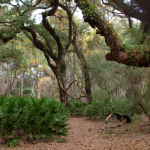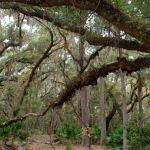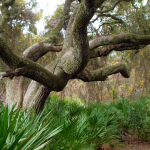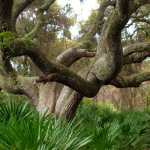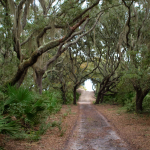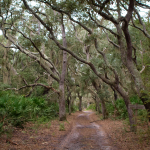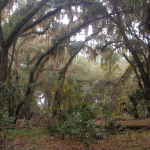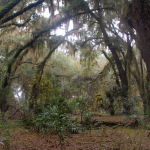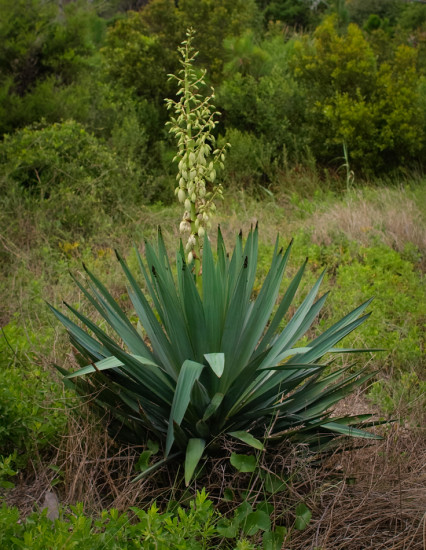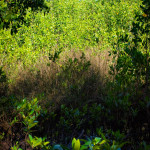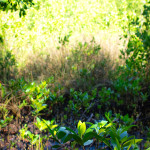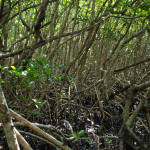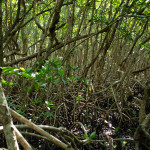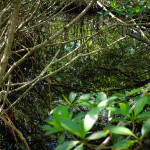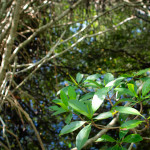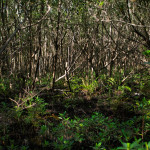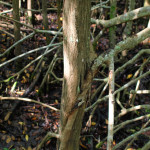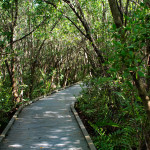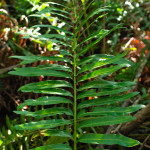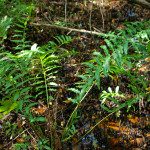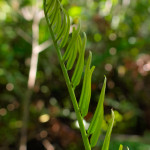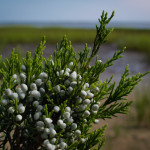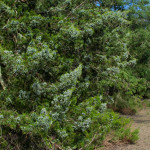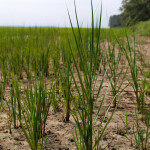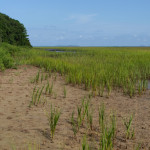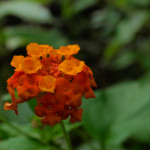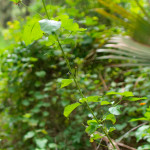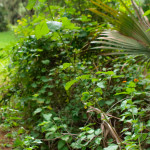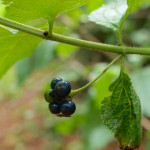Behind the dunes, live oak Quercus virginiana dominate the canopy of the maritime forest on much of Cumberland Island. The oaks are covered in epiphytes and lichens, including resurrection ferns and Spanish moss, and the under story is thick with saw palmetto.
Tag Archives: Plants
A bromeliad on a sand dune?
Mangrove transition
Black needle rush to red mangrove succession at 4-mile Cove Ecological Preserve.
Red Mangrove Expansion
The Red Mangrove, Rhizophora mangle, reaches the ends of its ranged near Cape Coral, Florida, as did the black mangrove. However, climate change has allowed for mangrove range expansion, likely due to a decrease in the frequency of extreme cold events per year (Cavanaugh 2013 PNAS).
Having seen Costa Rican red mangrove, and those at 4-mile Cove pictured here, the lack of cold tolerance in the trees is clear: the Costa Rican mangroves stand much taller and have a lower stem density (# of trees per area) than those in Florida, because of periodic (on the order of decades) frosts or cold events that wipe most of the trees out in Florida.
Mangrove Panorama
Black mangrove
Black mangrove, with their distinctive pneumatophores, were common at Estero Bay Nature Preserve, but (anecdotally) don’t seem to be fairing as well at 4-mile Cove Ecological Preserve, where red mangrove seedlings cover the understory.
Mangrove fern
I think this is a salt-tolerant mangrove fern, Acrostichum aureum, inhabiting the understory of mangroves in southern Florida’s 4-mile Cove Ecological Preserve.
I’ve also seen this species in Costa Rica, where it lines some of the banks at the mouth of Rio Sierpe, and has colonized some wetlands in Guana Caste.
A “fruiting” juniper
Given that the Red Cedar Juniperus virginiana is a gynmosperm, the juniper’s berries are distinct phylogenetically and developmentally from what we commonly call fruits, including true berries.
Smooth Cordgrass
I haven’t captured the flowers, fruits, or seeds yet, but Spartina alterniflora is the other dominant plant species in the salt marshes around Coastal Georgia.
Wild Sage
Flowers, fruits, and vegetative characteristics of wild sage Lantana camara.
While the florescence here only displays orange and dark orange or red, flower color varies widely in a single florescence, and changes in individual flowers once pollinated. The change in color signals to pollinators that a flower is no longer producing nectar, and, since the function of flowers, including their nectar production, is to attract animal pollinators to move pollen around, pollinated flowers tend to halt nectar production once pollinated. It does seem odd that a plant would communicate to pollinators as promptly (color change can occur within minutes) and directly as occurs here, given that the flower ‘has what it needs’. The hypothesis explaining this claims conservation of pollinator energy, presumably allowing improved visitation efficiency, which must benefit the host plant. Why not keep the pollinator guessing a little, especially in monoecious flowers where pollen could still move away from the host? (I don’t know if Lantana is monoecious – that is, has both male and female parts in the same flower)
Visible flower color change after pollination occurs in other plants too, and there are likely other changes that are not quite as striking to us, non-pollinating, humans, but are evident to pollinators.

